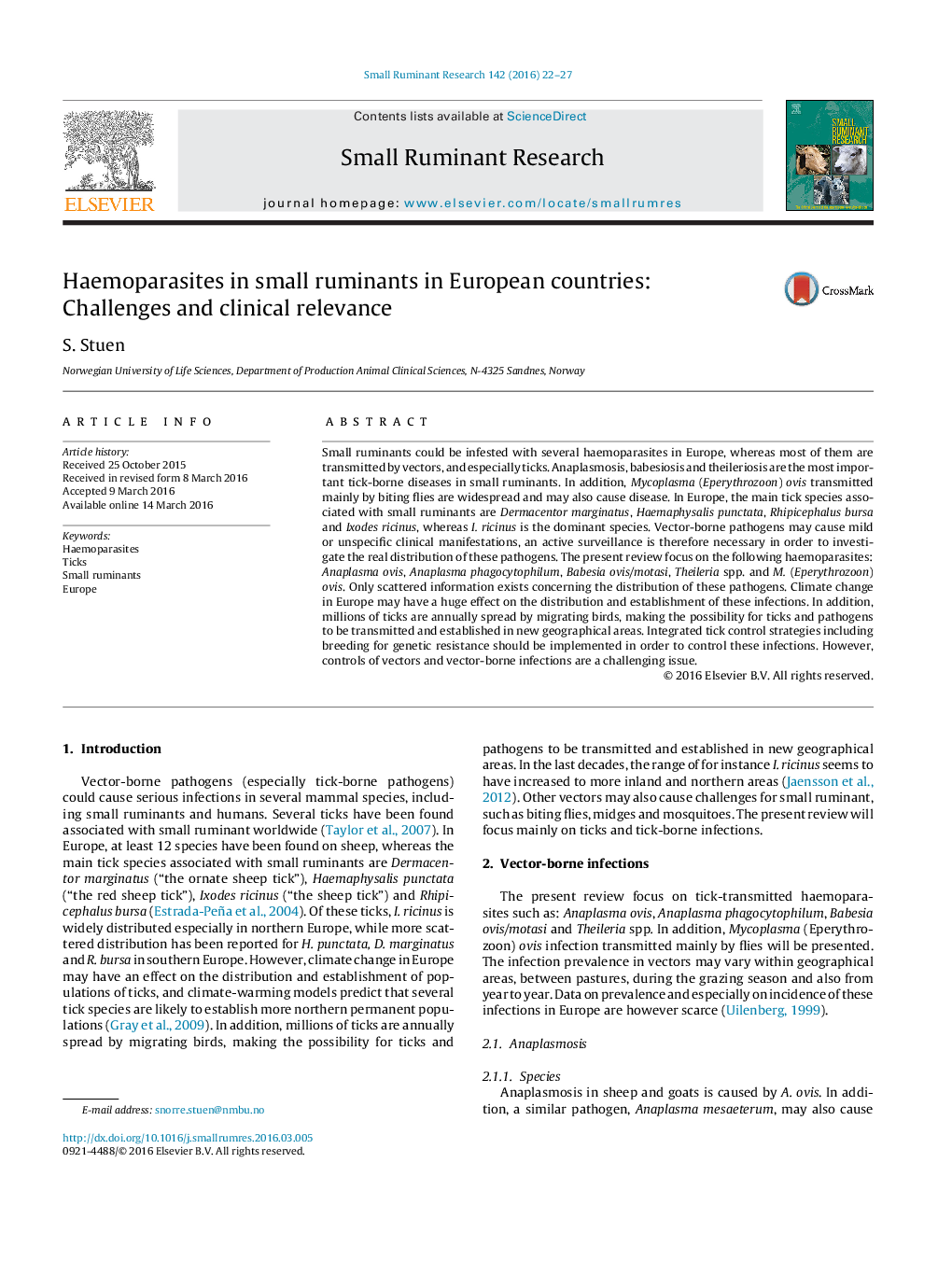| کد مقاله | کد نشریه | سال انتشار | مقاله انگلیسی | نسخه تمام متن |
|---|---|---|---|---|
| 5795410 | 1554350 | 2016 | 6 صفحه PDF | دانلود رایگان |
- Small ruminants could be infested with several haemoparasites in Europe, whereas most of them are transmitted by vectors, and especially ticks.
- Anaplasmosis, babesiosis and theileriosis are the most important tick-borne diseases in small ruminants.
- Integrated tick control strategies should be implemented in order to control these infections.
Small ruminants could be infested with several haemoparasites in Europe, whereas most of them are transmitted by vectors, and especially ticks. Anaplasmosis, babesiosis and theileriosis are the most important tick-borne diseases in small ruminants. In addition, Mycoplasma (Eperythrozoon) ovis transmitted mainly by biting flies are widespread and may also cause disease. In Europe, the main tick species associated with small ruminants are Dermacentor marginatus, Haemaphysalis punctata, Rhipicephalus bursa and Ixodes ricinus, whereas I. ricinus is the dominant species. Vector-borne pathogens may cause mild or unspecific clinical manifestations, an active surveillance is therefore necessary in order to investigate the real distribution of these pathogens. The present review focus on the following haemoparasites: Anaplasma ovis, Anaplasma phagocytophilum, Babesia ovis/motasi, Theileria spp. and M. (Eperythrozoon) ovis. Only scattered information exists concerning the distribution of these pathogens. Climate change in Europe may have a huge effect on the distribution and establishment of these infections. In addition, millions of ticks are annually spread by migrating birds, making the possibility for ticks and pathogens to be transmitted and established in new geographical areas. Integrated tick control strategies including breeding for genetic resistance should be implemented in order to control these infections. However, controls of vectors and vector-borne infections are a challenging issue.
Journal: Small Ruminant Research - Volume 142, September 2016, Pages 22-27
